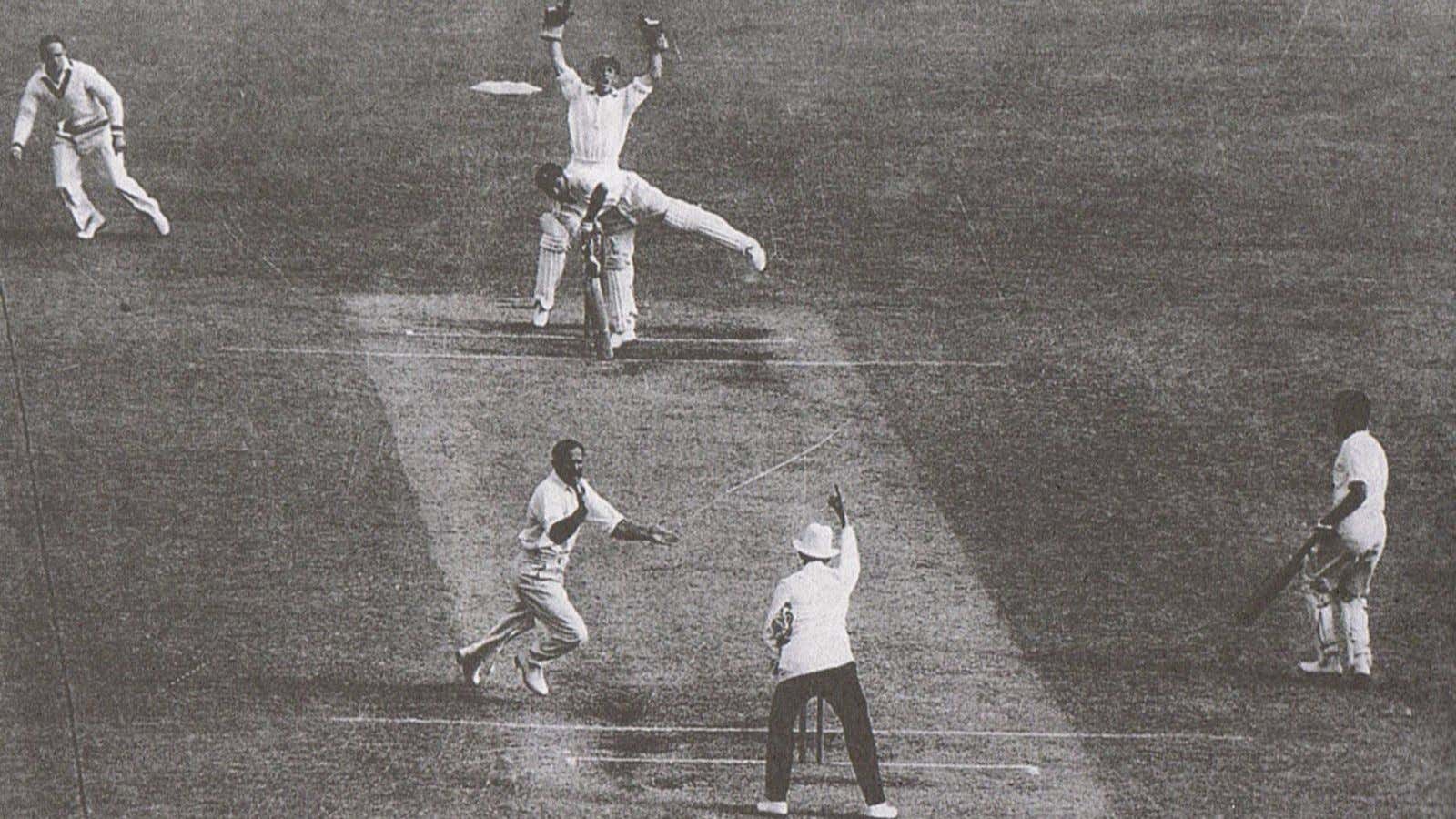It was December 1947, just months after India’s independence, when an Indian side led by Lala Amarnath faced Don Bradman’s Australia at the Sydney Cricket Ground.
On their first ever tour Down Under, the test match in Sydney was India’s second contest with the Australians and, with incessant rains allowing for only 10 hours of play in six days, it ended in a draw.
But it wasn’t entirely a damp squib—particularly, the rather strange way in which Australia lost its first wicket.
Here’s how the Wisden Cricketers’ Almanack (the Bible of cricket, to the uninitiated) described it:
Australia lost their first wicket in an unusual manner. In a previous match (Vinoo) Mankad, the bowler, warned (Bill) Brown about backing up too far, and when the batsmen repeated this, ran him out. This time Mankad gave no warning, and the first occasion Brown moved down the pitch too quickly the bowler whipped off the bails.
In cricketing parlance, the controversial move came to be known as “Mankading,” named after the talented Indian all-rounder from Gujarat who batted right-handed and bowled with his left.
Although extremely rare in international cricket—there have only been seven more instances since 1947—the “Mankading” remains immensely controversial.
The most recent was in June 2014, when Sri Lankan bowler Sachithra Senanayake “Mankaded” England’s Jos Buttler in an one-day international. The English captain, Alastair Cook, angrily described it as a “pretty poor act” and said that a “line was crossed.”
This is how the incident unfolded:
But there is a difference—relating to how far the bowler is in the delivery process—in the rules followed by the International Cricket Council, which governs international cricket, and the Marylebone Cricket Club, which frames the laws of the game.
Nonetheless, a review of the law after the 2014 incident found nothing wrong with “Mankading.”
Over the years, both India and Australia have employed “Mankading” to their benefit.
While Australia’s Greg Chappell sent back Englishman Brian Luckhurst in 1975 and pacer Alan Hurst did the same to Pakistan’s Sikander Bakht in 1979, Indian all-rounder Kapil Dev dismissed South Africa’s Peter Kirsten in 1992.
So, when India and Australia play the world cup semi-final at the Sydney Cricket Ground on March 26, perhaps batsmen in both teams should be careful not to go walkabout from the crease.
